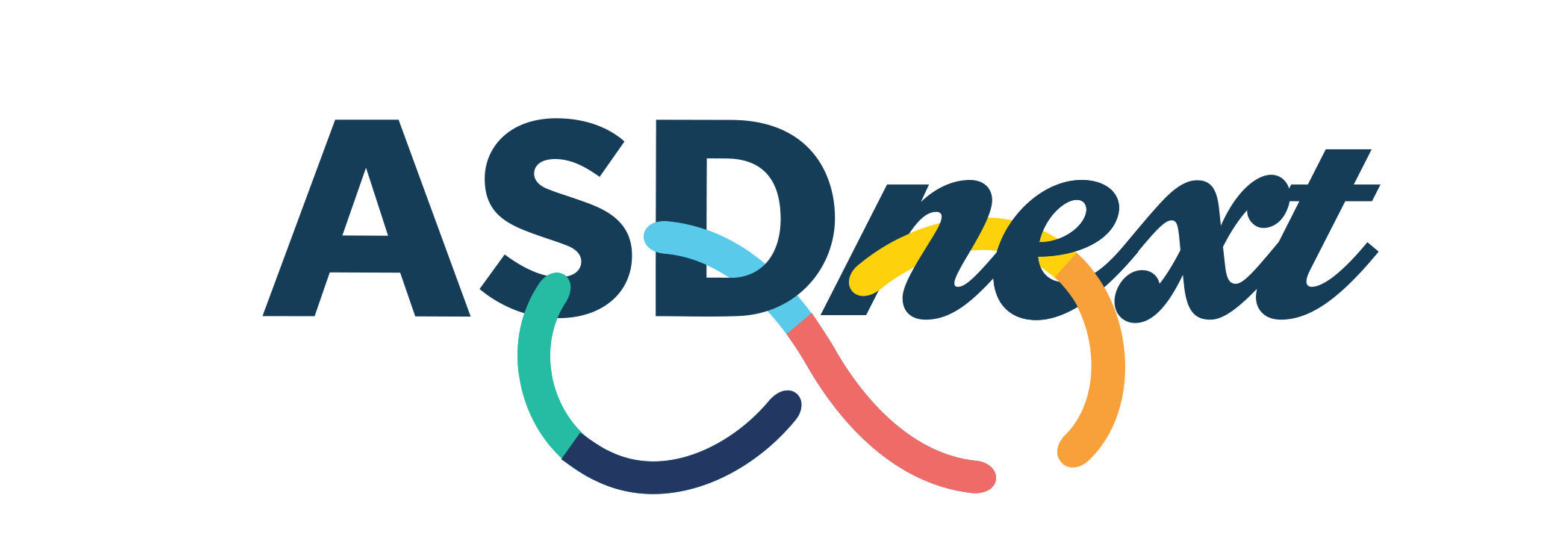Positive Approaches Journal, Volume 11, Issue 3
Positive Approaches Journal | 8-15

Volume 11 ► Issue 3 ► November 2022
Data Discoveries
The goal of Data Discoveries is to present useful data using new methods and platforms that can be customized.
Employment is a critical aspect of everyday life. Employment has been shown to decrease the occurrence of mental health diagnoses and associated costs1 and also addresses the adverse effects of unemployment on standards of living, healthy behaviors, and financial hardship.2 Unfortunately, despite the known benefits to employment, there are high levels of unemployment, underemployment, and poverty among autistic individuals and other intellectual developmental disabilities (IDD).3-7 However, there are publicly funded services to support individuals with disabilities in preparing for, accessing, and maintaining employment including Vocational Rehabilitation (VR) and Medicaid home and community-based service (HCBS) waivers.8 The data dashboard below shows national and state-level data on spending and utilization of employment services funded through VR and through HCBS waivers.
Vocational Rehabilitation Services
Vocational Rehabilitation is available to job seekers with disabilities with a combination of state and federal funding. People with any numbers of disabilities who have demonstrated difficulty getting or keeping a job can be eligible for VR services. State-operated VR offices provide over 25 different services,9 which are offered based on the needs of the individual. Vocational Rehabilitation services include supports like career search, job placement, and on-the-job supports, in addition to training opportunity and supports in a postsecondary setting as preparation for employment. Data for this article came from all VR case closures in federal fiscal years 2014-2016 in the 50 states and Washington D.C. for applicants ages 14 and older. Highlights from these data include:
- 4.5% of all VR service users were individuals on the autism spectrum, ranging from 0.8% (Mississippi) to 9.5% (Minnesota).
- Of all individuals on the autism spectrum who applied to VR during this time, 70.0% went on to receive services from VR.
- VR spent a total of $227,649,019 on services and the average spending per autistic person during this period was $6,042.
Medicaid-funded Services
Medicaid HCBS waivers are commonly used by states as a mechanism to provide services and supports to people who are eligible on the basis of diagnosis, functional assessment, assets, and other areas as deemed by the state and approved in the application to the Centers for Medicare & Medicaid Services (CMS).17 Medicaid-funded employment services, which are largely provided through Medicaid HCBS waivers, include employment services that are focused both on prevocational preparation supports, often offered in segregated settings, and supported employment services including job search, placement, and on the job supports that occur in community settings. Data is from Medicaid claims for all 50 states and Washington D.C. for individuals on the autism spectrum in years 2014-2016. Additional criteria for inclusion in the analysis were being at least 14 years old and having been enrolled in Medicaid for at least nine months of a given year. Highlights from these data include:
- The national spending average on Medicaid for autistic individuals from the years was $8,134 per person.
- Average spending on employment services by Medicaid by state for autistic individuals varies from $677 (Oregon) to $27,489 (Connecticut).
- The national average for autistic Medicaid beneficiaries receiving employment services was 5.3%, ranging from 0.34% (Washington) to 24.83% (Delaware).
- The national average for autistic Medicaid enrollees receiving employment services had a co-occurring Intellectual Disability is 80%.
The data dashboard below shows national and state-level data on spending, service access, and utilization of employment services funded through VR and through Medicaid HCBS waivers.
The data dashboard below shows information on the prevalence of mental health conditions among the ID and ASD populations from peer reviewed research studies. The visual displayed on the first tab of the dashboard shows a timeline of publications from all peer-reviewed research focused on identifying mental health diagnosis occurrence among autistic individuals and individuals with ID. Each circle represents a publication, with the size and color indicating how often the article was cited by other research, which is an indicator of the impact or reach of that publication. To read the text, click on a circle to be directed to the abstract for each article and potential access options. The second tab shows the frequency of mental health condition co-occurrences among the respondents to the 2018 PANA. Together, these visuals demonstrate how research outside of Pennsylvania and among autistic Pennsylvanians has pointed toward understanding co-occurring diagnoses and supports how progress toward services for mental health diagnoses need to be accessed and delivered.
Conclusion
The Autism Services, Education, Resources, and Training Collaborative (ASERT) offers resources relevant to employment among individuals on the autism spectrum and with other IDDs. This includes the Employment Resource Collection which has a compilation of links focused on various aspects of employment and supports and #ASDNext Work Resources which are curated with a focus on transition age youth and young adults. One resource in particular, Employment Myths & Facts, is focused on clarifying commonly misunderstood areas of employment for people with disabilities. The Pennsylvania Office of Developmental Programs (ODP)’s MyODP web platform also offers employment resources centered around the Everyday Lives framework. Additionally, there are several National Autism Indicators Reports, published by the Life Course Outcomes Research Program at the AJ Drexel Autism Institute, with a focus on employment including the National Autism Indicators Report: Developmental Disability Services And Outcomes In Adulthood and the National Autism Indicators Report: Vocational Rehabilitation. Finally, the Additionally, there are several National Autism Indicators Reports, published by the Life Course Outcomes Research Program at the AJ Drexel Autism Institute, with a focus on employment including the National Autism Indicators Report: Developmental Disability Services And Outcomes In Adulthood and the National Autism Indicators Report: Vocational Rehabilitation. Finally, the State Employment Leadership Network hub is a network of state disability agencies and provides information, resources, and events focused on employment and Employment First policies.
Funding Statement
Data for this article are supported by funding from the National Institute of Mental Health (Grant Number: 5R01MH117653) and the Health Resources and Services Administration (HRSA) of the U.S. Department of Health and Human Services (HHS) under cooperative agreement UT6MC45902 Autism Transitions Research Project. The information, content, and/or conclusions are those of the authors and should not be construed as the official position or policy of, nor should any endorsements be inferred by HRSA, HHS, or the U.S. Government.
References
1. Bush PW, Drake RE, Xie H, McHugo GJ, Haslett WR. The long-term impact of employment on mental health service use and costs for persons with severe mental illness. Psychiatr Serv. Aug 2009;60(8):1024-31. doi:10.1176/ps.2009.60.8.1024
2. van der Noordt M, IJzelenberg H, Droomers M, Proper KI. Health effects of employment: a systematic review of prospective studies. Occupational and environmental medicine. 2014:oemed-2013-101891.
3. Stapleton DC, O'DAY BL, Livermore GA, Imparato AJ. Dismantling the poverty trap: Disability policy for the twenty‐first century. The Milbank Quarterly. 2006;84(4):701-732.
4. Whittle HJ, Palar K, Ranadive NA, Turan JM, Kushel M, Weiser SD. “The land of the sick and the land of the healthy”: disability, bureaucracy, and stigma among people living with poverty and chronic illness in the United States. Social Science & Medicine. 2017;190:181-189.
5. Shattuck PT, Narendorf SC, Cooper B, Sterzing PR, Wagner M, Taylor JL. Postsecondary education and employment among youth with an autism spectrum disorder. Pediatrics. Jun 2012;129(6):1042-9. doi:10.1542/peds.2011-2864
6. Shattuck PT, Lau L, Anderson KA, Kuo AA. A National Research Agenda for the Transition of Youth With Autism. Pediatrics (Evanston). 2018;141(Suppl 4):S355-S361. doi:10.1542/peds.2016-4300M
7. Zablotsky B, Black LI, Maenner MJ, et al. Prevalence and trends of developmental disabilities among children in the United States: 2009–2017. Pediatrics. 2019;144(4)
8. Hall AC, Freeze S, Butterworth J, Hoff D. Employment funding for intellectual/developmental disability systems. Journal of Vocational Rehabilitation. 2011;34(1):1-15.
9. Revision of PD-13-05 Vocational Rehabilitation Program Case Service Report (RSA-911) Data Elements (RSA-PD-14-101) (October 25, 2013).
10. Chen JL, Sung C, Pi S. Vocational Rehabilitation Service Patterns and Outcomes for Individuals with Autism of Different Ages. J Autism Dev Disord. Sep 2015;45(9):3015-29. doi:10.1007/s10803-015-2465-y
11. Nevala N, Pehkonen I, Teittinen A, Vesala HT, Pörtfors P, Anttila H. The Effectiveness of Rehabilitation Interventions on the Employment and Functioning of People with Intellectual Disabilities: A Systematic Review. J Occup Rehabil. 12 2019;29(4):773-802. doi:10.1007/s10926-019-09837-2
12. Nye-Lengerman K. Vocational rehabilitation service usage and outcomes for individuals with Autism Spectrum Disorder. Research in Autism Spectrum Disorders. 2017;41-42(July):39-50. doi:10.1016/j.rasd.2017.08.003
13. Nord DK, Stancliffe RJ, Nye-Lengerman K, Hewitt AS. Employment in the community for people with and without autism: A comparative analysis. Research in Autism Spectrum Disorders. 2016;24:11-16.
14. Migliore A, Timmons J, Butterworth J, Lugas J. Predictors of employment and postsecondary education of youth with autism. Rehabilitation Counseling Bulletin. 2012;55(3):176-184.
15. Kaya C, Chan F, Rumrill P, et al. Vocational rehabilitation services and competitive employment for transition-age youth with autism spectrum disorders. Journal of Vocational Rehabilitation. 2016;45(1):73-83.
16. Butterworth J, Migliore A, Timmons J. Services and outcomes for transition age young adults with autism spectrum disorders: Secondary analysis of the NLTS2 and RSA 911. 2010.
17. Shea LL, Koffer Miller KH, Verstreate K, Tao S, Mandell D. States' use of Medicaid to meet the needs of autistic individuals. Health services research. 2021;56(6):1207-1214. doi:10.1111/1475-6773.13671




